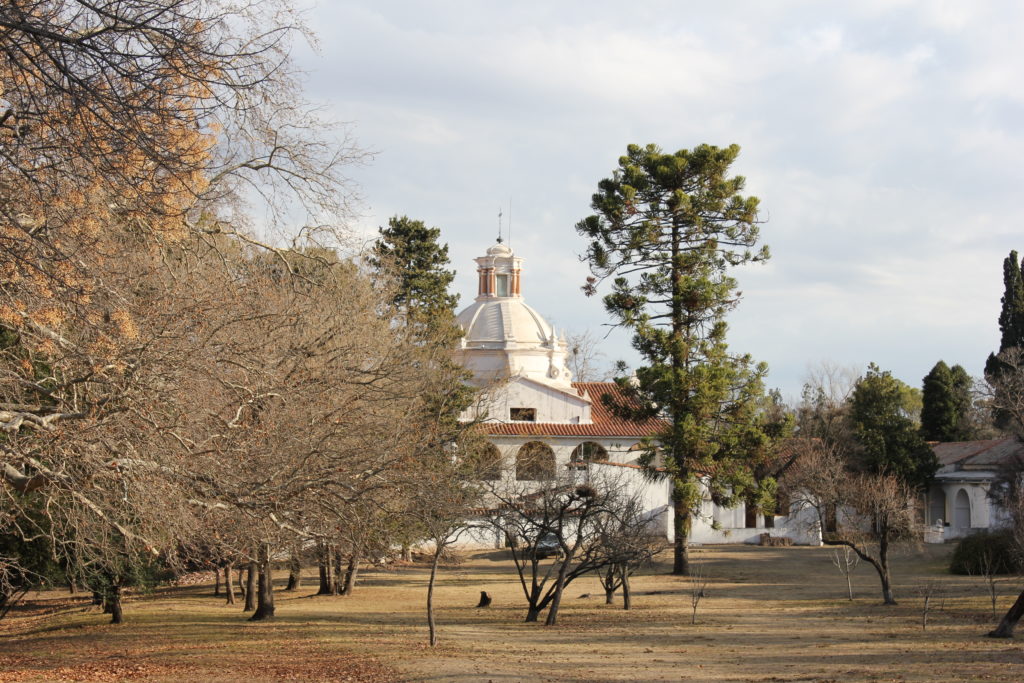
Casting Back
The Estancia, Martín Cullen, Adelphi, £20, hb, 399 pp, reviewed by Stoddard Martin
As a rule, this reader finds tales of childhood dull. True growing-up happens with first love, sexual encounters, jobs, facing the adult world on one’s own, escape from the bubble of family and parental control. If you’re not Proust, the matter of childhood is memorable only in rare cases. Martín Cullen’s account of his Argentine origins is one. His novel, essentially devoid of event, is a treasure trove of sensation.
The milieu is of privilege: an ancien régime under threat from the Perónist new order. There is circularity to this phenomenon: privileged youth exists to write about privileged youth; threatened privileged class exists to observe threatened privileged class. Lampedusa comes to mind. Nostalgia underpins beauty passing, which becomes its justification. One might be prepared to overturn an old order, but who would give up such a great elegist?
Cullen’s elegiac novel enthralls, the more so because its demi-Latin locale is nearly familiar yet exotically remote. It grows tedious too – great works of literature do: Dante, Joyce. One must relax into it, as into an adagio of Mahler or opera by Debussy. In reverie lurk riches to mine: one’s own as well as the creator’s – what Thomas Mann, listening to Siegfried’s funeral march, called ‘our earliest picture dreamings’.
Raymond Chandler sought to write a thriller so compelling in style than the last page could be ripped out and no one would mind that they didn’t find out who dun it. Cullen’s boyhood reading tags another referent: ‘Tarzan mentioned people and places without bothering to explain them… They existed simply because he was familiar with them… It seemed to mean that there was no need to place them within a rigid diagram of life like my own, in which every cousin, every house, was labeled and pinned down in the catalogue like creatures according to the velvet of their wings… They were there because they were, without the scaffolding of a story.’
His book is indeed a catalogue, and without much scaffolding of plot. Yet whatever ‘rigid diagram’ may underlie, it flows like a stream. The dramatis personae is predominantly of idle women, the atmosphere like that of the sisters in Chekov awaiting a trip to Moscow that may never arrive. The Argentine cousinage babbles in bathrooms of its Buenos Aires palaces or at al fresco luncheons on its country estates. Memory is its matter, gossip, homilies, bits of wisdom absorbed out of the French novels deemed de rigueur for aspirant grande dames.
Here is a staple in Cullen’s mix – the word, language, intersection of French with ‘criollo’ Spanish, a swirl of native patois behind other intrusions: English, Italian, Slav. Similar is the mode: men wearing tweed and jodhpurs, women in ball-gowns from Worth. One aunt intones paeans to ‘the favourite soup of Chateaubriand’; another dines out on having been ‘a friend of Picasso and Apollinaire’. Europe, above all Paris, constitutes a ne plus ultra in culture; yet fundamentally these folk are ‘arm-chair travelers… so Argentine’, whose sole ultimate value is caste.
Nuances have to do with the number of generations in situ, origins of wealth, strains in the blood, tradition in politics as well as education, culture and time spent abroad. Merits like physical beauty, intelligence, courage, competence, conduct and even financial acumen do not rate so high. Cullen’s matriarchal order is sensitive to the parvenu; it rests comfortably or not so on distinctions between master and servant, porteño and gaucho, recent immigrant and descendant of the liberator, San Martín. Ladies who have long dispensed charity are contrasted to ‘that whore’ Evita, who has had the socialistic nerve to ban their Sociedad de Beneficencia.
The matriarchy is catty, but stops short of violence: ‘They didn’t hate each other… but there was a fury loose around the house.’ It celebrates forms of Englishness, but only superficially. Catholic habits run deeper, but are worn lightly too. A few women are able, if only for a spell, to break out of the almost harem-like hermeticism: Cullen’s mother finds her truest pleasure on a runaway horse; an inamorata from the Bonapartist nouveaux exposes the hairy chest and rank seaside scent of a Uruguayan fisherman in front of erotically unfledged young Martín.
His boy’s-eye view of the world is intensely aesthetic. There is endless Impressionist light and cadences reminiscent of Baudelaire. Synaesthesia affects many a bravura description; Latinate English rises on occasion to an orotund sensuality redolent of D’Annunzio. Such masters, one gleans, are more than familiar to an author whose solitude in long summers on sweltering pampas would have been given over largely to books. Music features less often but, as in the cases above, this man-of-letters creates a music of his own. Read him aloud.
Structurally the book divides into three movements: town, country and a sea-journey to Europe. Somewhere in the middle the boy’s history begins to escape the womb of grandmothers and aunts. A little further we learn that their nurture was required because his mother ‘went mad’ after his excruciating birth. Further still we discern struggles in sexual awakening rivalry with the father. Yet seldom do fathers or men figure prominently. The tableau is of a class whose status was achieved by tough hombres decades or centuries ago; now males are for the most part rentiers, flaneurs, fan-handlers and walkers or the ‘afternoon men’ who play polo and skive off, neglecting their wives in favour of hunting, a mistress, the club or a drink.
“Professional titles had no currency… Nobody had a profession. One founded newspapers, planned enterprises, inspected estancias, accepted a ministry from time to time, and certainly the presidency of the great clubs, and in all of this one lost money, but to work steadily and industriously, no.’ So Cullen says, without judging. It justifies his greater attention to the women, heiresses often, thus conduits for funds the men fritter away. Heiresses or not, these women are for Cullen those who keep an order of being intact. They are the foundation on which family is grounded, thus where his admiration, or at least scrutiny, gravitates.
Martín does not grow typical of a male of his line. Like the last of the Buddenbrooks, his fate is other; yet unlike Mann’s little Hanno, he will not fall ill and die. His effeteness is robust and on its terms will triumph over family and class decline. He will be an artist/observer,a recorder of all surveyed. This book manifests it, and it is gorgeous. The aunties have not finally prattled in vain in their vacuum of provincial time and space. He paints them as universal, detailed as if in one of the faux-Venetian frescoes adorning the ceilings of their Buenos Aires reception rooms, or stitched like pale figures cavorting forever in one of the Gobelin tapestries hung over an estancia wall. An epoch in Argentine life thus becomes immortal. Ancestral deities rest proud.












Dear Dr Stoddard Martin.I got your name looking through the internet and from the published book on Colin Haycraft.
I would like to contact his family , son or daughter, if possible.
.Sometime ago I took some pictures and from both of them, Anna Haycraft included..
So now I would be happy to give a copy to the family.
If you know someone that I can contact please let me know.Thank you .
Michele Lasalandra